They make sparkling wines all over the world, from Spain to Italy, Argentina, New Zealand, California and of course France, where Champagne comes from. What’s important to remember is that only sparkling wines that are produced in the Champagne region of France can actually be called Champagne.
Why is that? France has a very strict set of rules that govern its wine production. When you buy a bottle of Champagne it tells you that the sparkling wine you’re drinking adheres to the quality standards of the Champagne appellation. Champagne comes from grapes grown in a specific region in the northeast of the country, near the towns of Reims and Épernay.
So is Champagne better than other sparkling wines? It depends on what you’re looking for. Champagne was one of the first widely exported sparkling wines, it has finer bubbles compared to Prosecco, and it is considered by many to be both the best and most traditional bubbly on the market. However, it can be quite expensive and there are plenty of other quality options to choose from.
Wine Tip: Did you know some of the top French Champagne houses, including Moet Chandon, have established wineries in Argentina, California and Australia and are now producing sparkling wines overseas using the same methods as they do for their French bubbles?
What is sparkling wine?
Sparkling wine is wine that has bubbles in it. Any sparkling wine, from Cava to Prosecco, starts out life as a still wine. Then, in most cases there’s a secondary process the wine undergoes to make it carbonated, or bubbly. Sparkling wines can be made using the Pétillant Naturel or the Charmat Method, but the best sparkling wines come from the Méthode Champenoise which, no surprise given the name, is what they use to make Champagne.
What’s the difference between the various methods? Pétillant Naturel, also called the Ancestral Method, was the original way of making sparkling wine. Fermentation happens only once and takes place in the bottle. The result is a rise in pressure and residual sugars that remain in the wine. While this method is still in use in a few places in France and Italy, there’s no filtration, so you can get some sediment in your glass.
The Charmat Method is a bulk approach to fermentation notably used by producers of Prosecco and Sekt. It gives you bubbles with more uncomplicated and primary fruit. Producers make a base wine first, blend it and then put it in a pressurized tank rather than a bottle. The yeast and sugar are added and because it’s kept under pressure, the carbon dioxide dissolves into the wine. They then move it to another tank, remove the sediment, add a dosage – more on this later, and bottle it. The wine can be left on its lees (yeast cells), but because the tanks are so large, the lees to wine content is smaller and you end up with less complexity and subtlety of flavor than you’d find in Champagnes.
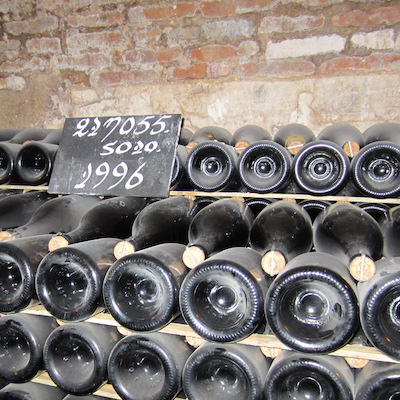

Méthode Champenoise
And that brings us to the Méthode Champenoise which is the traditional approach to fermentation used by producers of Champagne, and the best sparkling wines from around the world. This method requires a base blend of still wines to which a mixture of yeast and sugar is added, causing a secondary fermentation in the bottle. The by-product of sugar turning into alcohol is carbon dioxide which gets absorbed into the wine, giving it bubbles.
This secondary fermentation process is slow and happens in cool cellars over longer periods of time. The yeast cells fall to the bottom of the bottle and break down, providing added complexity and doughy aromatics. The longer the wine is aged, the more complex it becomes. For example, Dom Pérignon spends at least ten years on its lees. Bottles are kept on an angle so the sediment collects in the bottle nose, then they’re placed in a cold water solution which freezes it. The pressure shoots it out and winemakers add a dosage to finish the bottle. A dosage is sweetened wine and the amount used determines if the wine will be Brut, Extra-Dry, Sec or Demi-Sec.
Wine Knowledge: Champagne bottles have to be made of thicker and heavier glass because there’s so much pressure inside, a normal bottle would explode.
Which grapes do they use?
Most new world sparkling wine producers use Chardonnay, Pinot Noir and Pinot Meunier grapes in their blends. These are also the traditional grape varietals used to make Champagne. However, sparkling wines from Spain, including Cava, use indigenous Spanish grape varieties. In Italy, Prosecco is made from the native Italian Glera grape varietal, and Sekt, which are sparkling wines from Germany and Austria, are predominately made from Riesling.
Wine Tip: If a Champagne or a sparkling wine says Blanc de Blanc it means it’s made from 100% white grapes, which are usually Chardonnay but can also be Pinot Blanc (blanc means white in French). You may also encounter a Blanc de Noir, which means it’s a wine made predominantly from Pinot Noir and Pinot Meunier, which are both red grapes.

Why is Champagne so expensive?
Champagne is the most expensive and prestigious of the sparkling wines. Bottles can range from an average of $65 for a Brut Non-vintage Champagne to $250 or higher. The higher price is a result of a number of factors including a smaller production scale, but also the quality and complexity of the Champagne itself.
To make Champagne they use first press wine or free run juice which has the highest quality of fruit. Grapes are harvested by hand and pressed with minimal force so as not to break the skins and release bitter notes into the wine. The specific blend used is important as well. Non-vintage Champagne is usually made from 20-40% older vintage still wines that were stored from previous harvests, plus the current year’s wine. This blending of wines is what distinguishes different Champagne houses and winemakers. For example, Charles Heidsieck produces 90+ still wines from 90+ separate vineyards. They store the still wine in refrigerated stainless steel tanks. The winemaker then tastes all the batches and decides what the blend is going to be.
Champagnes are also aged for two or more years in the dark cool tunnels and cellars that spread across the Champagne region. The longer the wine is aged on its lees, the finer the bubbles will be.
More about Champagne

What makes Champagne so unique is its terroir. To make good sparkling wines, you need higher acid and lower sugar grapes and that’s exactly what you get in Champagne. The soil contains limestone and a specific kind of chalk which comes from the remains of an ancient seabed. The vineyards in Champagne also benefit from a cooler maritime climate, meaning they can harvest the grapes in late September and October. Once they’re harvested and pressed to make a still wine, the blending and secondary fermentation process can begin in the 25 miles of underground tunnels.
Sparkling wines from around the world
All you need to know about Cava

Cava is a sparkling wine from Spain that uses indigenous Spanish grape varietals, including Macabeo, Xarel-lo and Parellada, and Garnacha and Trepat for Rosé wines. Most Cava comes from the Penedès region in Catalonia, not far from Barcelona, but it can also be found in the Rioja region. It’s made in the same way as Champagne, meaning it’s aged in the bottle. This gives it good complexity, and as with many Spanish wines, you’ll find it’s a great value compared to some of the more expensive French bubbles. You may recognize some of the larger producers of Cava, including Friexienet, Codorníu, Segura Viudas and Juvé y Camps (don’t discount the smaller wineries too!). Expect to pay between $15 to $20 a bottle.
What is prosecco?
Prosecco is sparkling wine from Italy. While it is aged on its lees, this process happens in a large tank so the resulting wine has slightly less individual character and cannot be kept the way Champagne can. In fact, it’s best to drink this wine when it’s fresh and young. Prosecco tends to be on the fruitier side and is a good value if you want bubbly that won’t break your budget.
Sparkling wine from California
The best sparkling wine from California tends to be dry with layers of fruit and fine bubbles thanks to the way in which it’s made, which is mostly using the Champagne method. In fact, a number of California sparkling winemakers, from Domaine Chandon in Napa to Roederer Estate in Anderson Valley and Mumm Napa are owned by famous French Champagne Houses. Even producers from Spain have a foothold, Freixenet owns Gloria Ferrer in Carneros. Bottles can range in price from $20 to $50 and can be in the Brut, Blanc de Noir or Brut Rosé styles. Note, there are also some American owned wineries. Schramsberg is one of the best California producers, which has been making bubbly since 1965.
Crémant, the other French bubbles
While Crémant is a French sparkling wine that’s made using the Méthode Champenoise, it can’t be called Champagne because it’s not made from grapes that come from the Champagne region. In fact, Crémant is produced in most appellations of France which means it can have a wide variety of styles and contain different grape varietals. It tends to be lesser known than other sparkling options and is definitely something to try the next time you’re looking for affordable bubbly.
English sparkling wines, the new trend
The reason English sparkling wines are doing so well is that parts of Southern England have the same chalky soil running beneath them that gives vineyards in the Champagne region their unique character. The English climate is also on the cooler side, so the vines can be harvested later in the year (what’s funny is that for many years, English summers were actually too cool for making wine, but with climate change, it’s warmed up a bit). The longer Chardonnay or Pinot Noir stay on the vine, the more complex the resulting wine can become. English sparkling wine can be dry and even trick you into thinking it’s Champagne you’re drinking!
Where else do they make sparkling wine?
You can find high quality sparkling wine from Australia, New Zealand, South Africa and Argentina as well as Oregon, New Mexico and the Finger Lakes region of Upper State New York.
What you’ll find on a sparkling wine label – and what it means
- Ultra Brut, Brut Nature or No Dosage means a minimal amount of sugar was added to the blend before they put the cork in. This is the most dry and austere style.
- Brut is the most popular style of dry sparkling wine and Champagne. Note it is actually drier than Extra-Dry.
- Extra-Dry means the wine is a touch more on the fruity side but still dry.
- Sec means it has some sweetness to it, but not as much as Demi-Sec.
- Demi-Sec indicates a medium level of sweetness. When the secondary process is over, a higher sugar wine is added during the dosage.
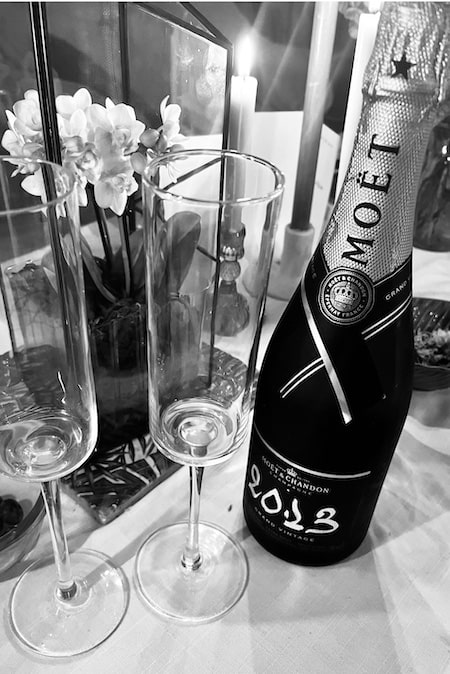
Vintage, Non-vintage and Prestige Cuvée / Tête de Cuvée
Vintage Champagnes have a year on them and 100% of their base wine is from a specific growing year. A Vintage isn’t produced every year. It’s only released when the winemakers feel the grapes have exceptional qualities and will make a standout wine. These Champagnes are usually a blend of the better vineyards, are aged for longer before release, and are always more expensive. Non-vintage Champagnes are a blend of still wines from different years.
A Prestige Cuvée or Tête de Cuvée signifies that you’re about to drink the best of the best. Every Champagne house has their top wine, which is a special Cuvée usually aged for 10 to 15 years (Dom Pérignon is a Vintage Tête de Cuvée of the Moet Chandon winery). These wines are extremely expensive, unique and complex, offering a different experience from a regular Champagne. They can be either Vintage or Non-vintage. Grand Siècle from Laurent-Perrier can pull from several vintages. Krug is another Non-vintage Champagne that uses wines up to 20 years old in its blend.
Why you should try Rosé sparkling

Rosé sparkling wine and Rosé Champagnes are usually made by adding a little dry Pinot Noir. When it comes to Champagne, this wine typically comes from an area called Bugey. Instead of just pressing the Pinot Noir juice, which will be clear, they age it on its skins and make a still wine which is then added to the Champagne during the dosage process. Only a small percentage is used to color the wine without changing the flavor dramatically. Rosé Champagne is a fuller-flavored sparkling wine you can have with food. You’ll find it’s in the same price range as a regular bottle but offers a nice alternative bubbly that complements a range of entrées, from baked stuffed shrimp to lobster risotto and even a vegetable curry.
Food pairing ideas for sparkling wine
Sparkling wine goes with everything which is what makes it such a versatile wine food pairing option. You can serve it with appetizers, soups, desserts and in the case of Rosés, even your main course. Champagne is a natural accompaniment to seafood. Consider opening a bottle to go with oysters, sushi or any other shellfish including shrimp and crab. You might serve Champagne with hors d’oeuvres like canapés, or fruit and cheese boards. They can pair with richer food too, like foie gras or paté, or you can have them with dessert. If you are planning on serving a sparkling wine with food that is sweet, you might consider a Demi-Sec or Sec which would make a perfect pairing with a syrupy dessert.
5 Tips on Champagne glasses
Champagne glasses come in a variety of styles, from the famed open cup shape which was supposedly modeled after Maria Antoinette’s left breast, to the tall flutes you’ll find in most restaurants. So how do you know which glass is best?
- Choose tulip-shaped glasses. You want something that bows out in the middle and then becomes more narrow (just not too narrow) at the top. These are the best glasses to drink Champagne in.
- Keep a set of standard flutes on hand. These Champagne glasses can be used for most bubbly. These are better than the cup shape because they funnel the wine directly onto your tongue. Just don’t go too narrow because you won’t be able to fully experience the wine’s aromatics!
- Invest in some nice crystal. Remember, the thinner the glass the better.
- Pay attention to how you wash your glasses. If you wash them and dry them upside down on a cloth, they can absorb some of the soap vapors from the cloth which will coat the inside of the glass. This can affect the quality of the Champagne beads the next time you open some bubbly.
- Consider a wine glass. If you don’t have Champagne flutes handy, the best substitute is a Sauvignon Blanc glass.
Can you age Champagne and sparkling wine?
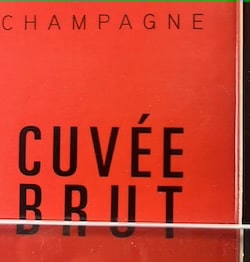
You can age both Champagne and sparkling wine, but it does depend on what kind of sparkling wine you have. Champagne becomes more complex as it ages, and the higher the category, the longer you can keep it. For example, a Tête de Cuvée Brut can age for 10 to 15 years. The highest quality sparkling wines also age gracefully and become more evolved and nuanced as they get older. However, less expensive bottles, and any wine produced using a bulk fermentation process, will not age as well.
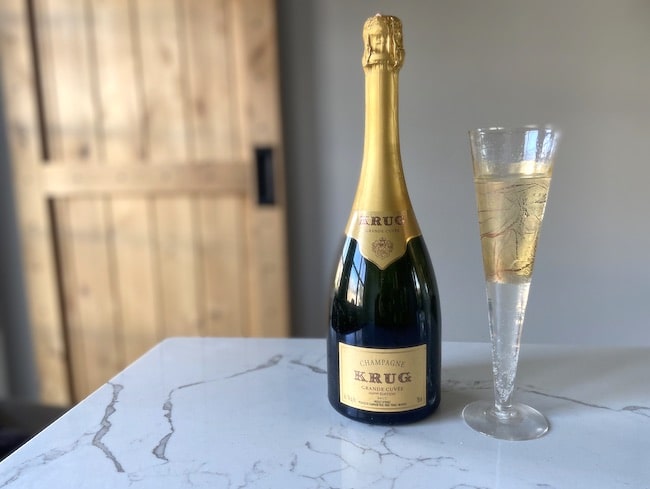
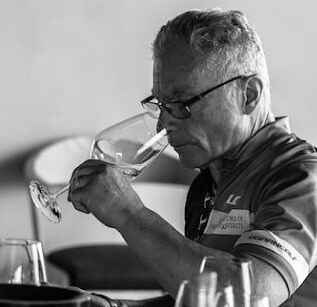
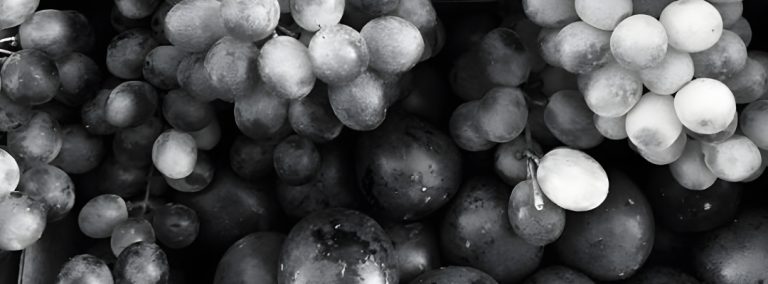



Hi Freddy! Merry Christmas! Love the article but do have a review of this season’s best choices/recommendations or can you point to a reviewer that you trust?
Hi John, I’d recommend Moet, Bollinger or Delamotte for Champagne. For sparkling wines, Argyle or Domaine Chandon. If you’re looking for the season’s best bottles – try Decanter or Wine Spectator for some quality reviews. Cheers!